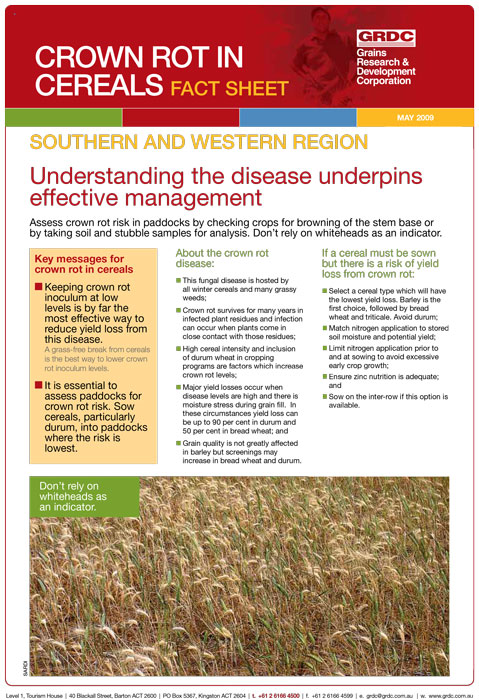Crown Rot in Cereals Fact Sheet - Southern & Western Regions
Crown Rot in Cereals Fact Sheet - Southern & Western Regions
Published: 20 May 2009

Understanding the disease underpins effective management
Assess crown rot risk in paddocks by checking crops for browning of the stem base or by taking soil and stubble samples for analysis. Don’t rely on whiteheads as an indicator.
Key messages for crown rot in cereals
- Keeping crown rot inoculum at low levels is by far the most effective way to reduce yield loss from this disease. A grass-free break from cereals is the best way to lower crown rot inoculum levels.
- It is essential to assess paddocks for crown rot risk. Sow cereals, particularly durum, into paddocks where the risk is lowest.
About the crown rot disease:
- This fungal disease is hosted by all winter cereals and many grassy weeds;
- Crown rot survives for many years in infected plant residues and infection can occur when plants come in close contact with those residues;
- High cereal intensity and inclusion of durum wheat in cropping programs are factors which increase crown rot levels;
- Major yield losses occur when disease levels are high and there is moisture stress during grain fill. In these circumstances yield loss can be up to 90 per cent in durum and 50 per cent in bread wheat; and
- Grain quality is not greatly affected in barley but screenings may increase in bread wheat and durum.
Want to link to this publication?
Use www.grdc.com.au/GRDC-FS-CrownRotCerealsSW to ensure your link remains current and up-to-date!
Region: South; West
